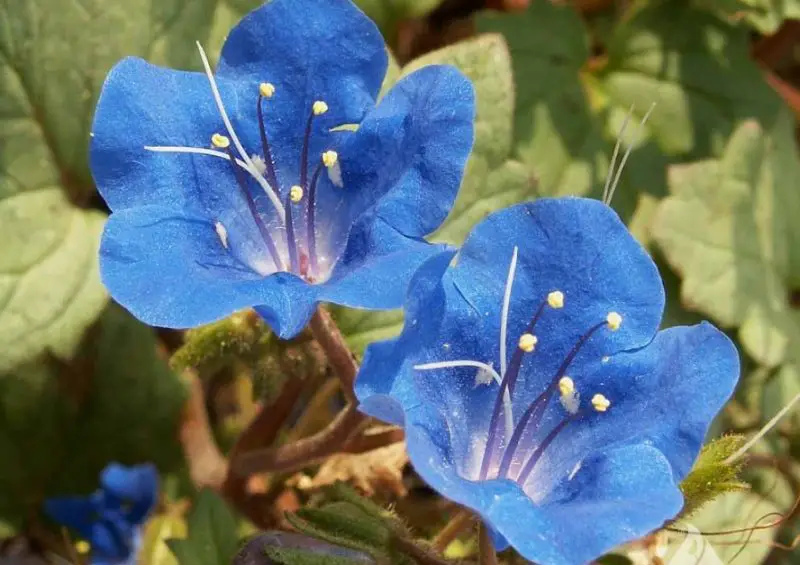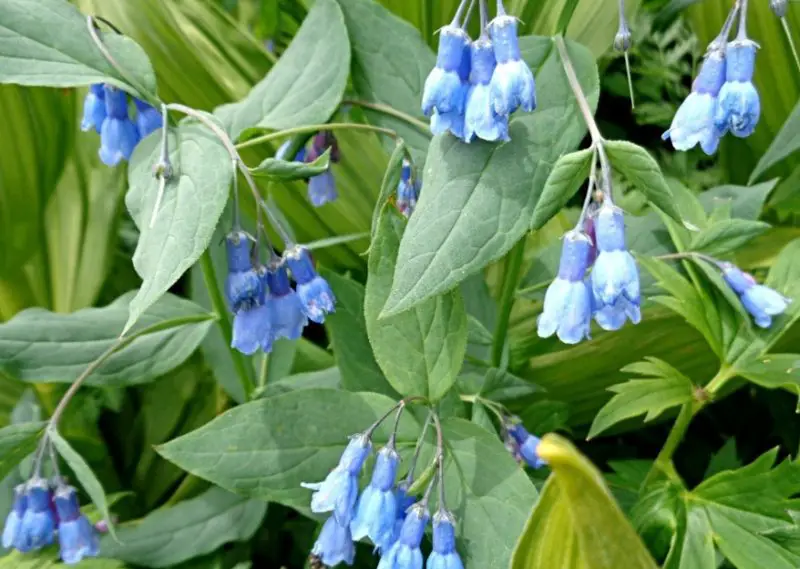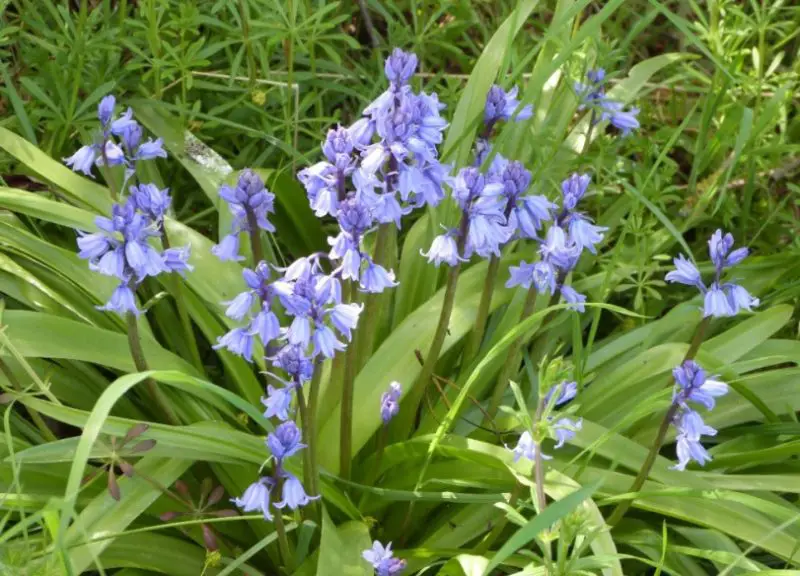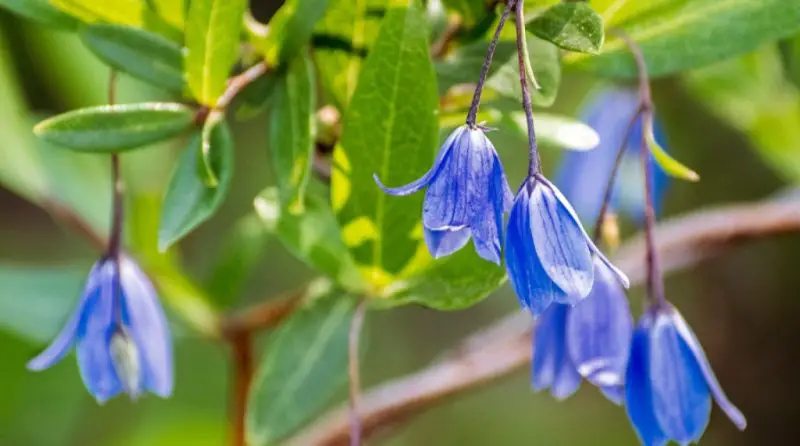Bluebell flowers are admired worldwide for their enchanting bell-shaped blooms, vibrant colors, and symbolic meanings. In this guide, we’ll explore 20 unique types of bluebell flowers, complete with descriptions, growing tips, and their origins. Whether you’re a gardening enthusiast or simply curious about nature’s beauty, this comprehensive list will inspire you.
What Are Bluebell Flowers?
Bluebells are perennial flowers belonging to various genera such as Hyacinthoides, Campanula, and Mertensia. They are renowned for their bell-shaped blossoms that appear in hues of blue, purple, pink, and white. Bluebells are commonly found in woodlands, gardens, and rocky terrains.
Popular Types of Bluebell Flowers
California Bluebell (Phacelia campanularia)

Native to California and the southwestern United States, the California Bluebell is an annual wildflower with vivid cobalt-blue, bell-shaped blooms. It thrives in sandy, well-drained soils and full sun, making it ideal for xeriscaping and wildflower gardens. Blooming in spring, it attracts pollinators like bees and butterflies, adding life and color to arid landscapes.
Chilean Bluebell (Nolana paradoxa)

The Chilean Bluebell, native to Chile and Peru, features trailing or spreading stems adorned with funnel-shaped blue-lavender flowers. This drought-tolerant plant grows well in dry, rocky soils and is perfect for hanging baskets or ground cover. After flowering, it produces small, fleshy fruits, adding unique interest to gardens.
Mountain Bluebell (Mertensia ciliata)

Found in North America’s mountainous regions, the Mountain Bluebell boasts bell-shaped flowers in shades of blue to purple. It thrives in moist meadows, streamsides, and high elevations, preferring cool climates and rich soils. Blooming plants attract hummingbirds and other pollinators, enhancing biodiversity in alpine settings.
Italian Bluebell (Hyacinthoides italica)

Native to the Mediterranean, the Italian Bluebell produces compact, star-shaped blue or violet flowers arranged in loose clusters. Growing up to 30 cm tall, it thrives in dry, rocky soils and sunny to partially shaded conditions. This drought-tolerant species blooms in early to mid-spring, making it a popular choice for rock gardens or naturalized areas.
Siberian Bluebell (Scilla siberica)

The Siberian Bluebell, native to Eastern Europe and Russia, displays small, deep blue, downward-facing flowers. It blooms in early spring, even through late snowfalls, and grows to about 15 cm tall. Thriving in moist, well-drained soils, it spreads rapidly and is commonly planted in lawns, borders, or under deciduous trees.
Azure Bluebell (Campanula azurea)

The Azure Bluebell, native to the Mediterranean, features light blue bell-shaped flowers with a delicate, airy appearance. It grows well in sandy or rocky soils with good drainage and tolerates drought once established. Blooming in mid to late summer, it is a charming choice for rock gardens and alpine landscapes.
Giant Bluebell (Hyacinthoides hispanica ‘Queen of the Blues’)

The Giant Bluebell, a cultivated variety of the Spanish Bluebell, is taller and more robust, reaching up to 50 cm. It produces striking, large clusters of blue, bell-shaped flowers, ideal for borders, mass planting, or naturalized gardens. Thriving in sun or partial shade, it is resistant to deer and pests.
Creeping Bluebell (Wahlenbergia gloriosa)

The Creeping Bluebell, native to Australia’s alpine regions, is a low-growing plant with delicate pale blue to violet bell-shaped flowers. It tolerates cooler climates and grows in rocky, sandy soils. Blooming in summer, it spreads as a ground cover, making it ideal for rockeries and slopes.
Korean Bluebell (Campanula takesimana)

Native to Korea and East Asia, the Korean Bluebell features graceful bell-shaped flowers in soft blue to lavender with darker veins. Tall stems can grow up to 90 cm, making it a striking addition to cottage gardens. Preferring moist, well-drained soils, it blooms from late spring to early summer and is known for its vigorous growth.
English Bluebell (Hyacinthoides non-scripta)

The English Bluebell, native to the UK and Western Europe, is known for its deep violet-blue, bell-shaped flowers that gracefully droop to one side of the stem. These fragrant blooms feature creamy-white pollen and thrive in woodlands or shady areas with moist, well-drained soil. English bluebells are a beloved symbol of constancy and gratitude. Their enchanting scent and vibrant colors make them a treasured sight in spring, often carpeting forest floors in breathtaking displays.
Spanish Bluebell (Hyacinthoides hispanica)

The Spanish Bluebell originates from Spain and Portugal, with upright stems adorned with flowers blooming on all sides. Less fragrant than the English variety, its blooms come in diverse shades of blue, pink, and white. Spanish bluebells flourish in sunnier spots and adapt well to garden settings. Known to hybridize with English bluebells, they create hybrids like Hyacinthoides × massartiana, blending characteristics of both species.
Hybrid Bluebell (Hyacinthoides × massartiana)

The Hybrid Bluebell combines traits of the English and Spanish bluebells, with semi-drooping flower stems and blooms encircling the stem. Its fragrance is intermediate between its parent species. Valued for its hardiness, the hybrid bluebell is commonly planted in gardens but can spread aggressively, potentially outcompeting native bluebells. Its adaptable nature makes it a popular, though sometimes controversial, addition to cultivated landscapes.
Virginia Bluebell (Mertensia virginica)

Native to North America, Virginia Bluebells are perennial plants with tubular flowers that transition from pink buds to lavender-blue blooms. They prefer rich, moist soils in shaded woodland environments and bloom in early spring, adding charm to woodland wildflower displays. Pollinated by bees and butterflies, Virginia Bluebells play an essential role in supporting early-season pollinators while brightening natural landscapes.
Scottish Bluebell (Harebell) (Campanula rotundifolia)

The Scottish Bluebell, or Harebell, is found across Europe, North America, and Asia. Its delicate, nodding flowers are pale blue or violet, thriving in rocky or sandy soils and coastal regions. Unlike woodland bluebells, they bloom later in the season. These resilient flowers symbolize humility and everlasting love, making them a poignant addition to any landscape.
Spanish Dwarf Bluebell (Hyacinthoides hispanica ‘Excelsior’)

This cultivated variety of the Spanish Bluebell is compact, making it ideal for gardens and containers. Spanish Dwarf Bluebells produce dense clusters of blue flowers, are resistant to pests and diseases, and thrive in well-drained, sunny locations. Their robust and manageable growth habit ensures they’re a favorite for gardeners seeking low-maintenance beauty.
Pink Bluebell (Hyacinthoides hispanica ‘Rosea’)

A stunning pink-flowering cultivar of the Spanish Bluebell, Pink Bluebells grow upright flower spikes with lightly scented blooms. They are easy to cultivate, hardy, and popular in ornamental gardens for their unique color. While they prefer partial shade, they can tolerate full sun, adding versatility and vibrancy to any garden setting.
White Bluebell (Hyacinthoides non-scripta ‘Alba’)

The White Bluebell, a variant of the English Bluebell, features delicate, fragrant white flowers with the same drooping habit. It thrives in woodland settings or shady gardens, where it stands out for its graceful, ethereal appearance. Though less common than traditional blue varieties, White Bluebells add a touch of elegance to any natural or cultivated space.
Bluebell Creeper (Billardiera heterophylla)

The Bluebell Creeper, native to Australia, is a climbing plant known for its small, bell-shaped blue flowers and evergreen foliage. With its dense growth habit, it is perfect for trellises, fences, or ground cover. This versatile plant thrives in well-drained soil and moderate sunlight, adding a vibrant touch to gardens year-round.
How to Care for Bluebell Flowers
Bluebells are beloved for their low-maintenance nature, but they still require some basic care to thrive and maintain their beauty. The foundation of healthy bluebell growth starts with soil. Bluebells prefer well-drained, nutrient-rich soil that retains moisture without becoming soggy. Adding organic matter such as compost or well-rotted manure can enhance soil fertility and drainage.
Watering is essential, especially during dry spells. While bluebells need regular watering to keep their roots hydrated, overwatering can lead to waterlogging, which may cause root rot. Always allow the top layer of soil to dry out slightly between waterings.
In terms of sunlight, most bluebells flourish in partial shade, making them ideal for woodland gardens or shaded areas under trees. However, some types, like Spanish bluebells, can tolerate sunnier spots. Understanding your specific bluebell variety helps you position them correctly in your garden.
Planting bluebells also requires thoughtful spacing. Bulbs should be planted approximately 10-15 cm (4-6 inches) apart to prevent overcrowding, ensuring each plant has adequate space for roots to spread and grow. Crowded bulbs may compete for nutrients, leading to weaker blooms.
Conclusion
Bluebell flowers offer timeless beauty and versatility, making them a favorite in gardens and natural landscapes. With 20 unique types to choose from, you can create stunning displays that bloom year after year. Incorporate these charming flowers into your garden and enjoy their enchanting allure!






